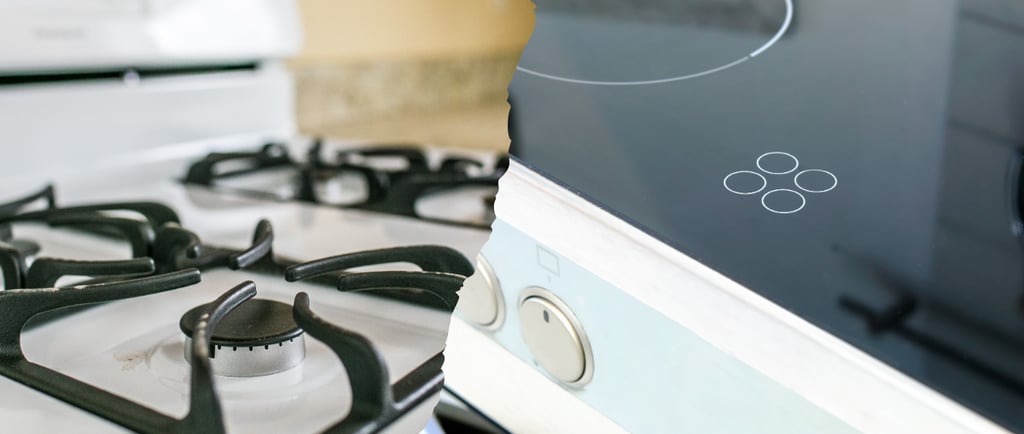Say Goodbye to Grime: Stovetop Cleaning 101
Stovetops are often the heart of the kitchen, where culinary magic happens. But with all the sizzling, frying, and simmering, they also tend to attract their fair share of grime and grease. Keeping your stovetop clean not only enhances the aesthetic appeal of your kitchen but also ensures a hygienic cooking environment. In this comprehensive guide, we'll delve into the nitty-gritty of stovetop cleaning, equipping you with the knowledge and tools to bid farewell to grime once and for all.
4/9/20243 min read


Understanding the Stovetop
Before diving into the cleaning process, it's essential to understand the anatomy of your stovetop. Stovetops come in various types, including gas, electric coil, glass, ceramic, and induction, each with its unique cleaning requirements. Gas stovetops typically feature removable burner grates and caps, while electric coil stovetops have heating elements that can be lifted for cleaning. Glass and ceramic stovetops are sleek and modern but require gentler cleaning methods to avoid scratching or damaging the surface. Induction stovetops, on the other hand, utilize electromagnetic energy to heat pots and pans, necessitating specialized care.
Tools and Materials Needed
Gathering the right tools and materials is crucial for effective stovetop cleaning. Essential supplies include a non-abrasive cleaner, microfiber cloths, a sponge or scrub brush, and a scraper for tackling stubborn stains. Depending on your stovetop type, you may also need specialty cleaners or tools such as coil burner brushes or glass cooktop cleaners. For those inclined towards eco-friendliness, there are plenty of natural alternatives like vinegar, baking soda, and lemon juice that can work wonders on grime.
Preparing for Cleaning
Safety should always be a top priority when cleaning your stovetop. Before starting, ensure that the stove is turned off and cool to the touch. If you're working with a gas stovetop, disconnect the gas supply to prevent accidents. Next, remove the burner grates and burners or coils to access the stovetop surface more easily. Degrease the stovetop using a mild detergent or a specialized degreaser to loosen stubborn residue before proceeding with the cleaning process.
Cleaning Methods for Different Stovetop Types
Each stovetop type requires specific cleaning techniques to achieve optimal results. For gas stovetops, focus on cleaning the burner grates and caps by soaking them in hot, soapy water and scrubbing away any built-up grime. Electric coil stovetops benefit from regular cleaning of the coil burners and addressing spills around the coils to prevent clogs or malfunctions. Glass and ceramic stovetops demand gentle care to avoid scratching or damaging the surface, necessitating the use of specialized cleaners and polishing for a streak-free finish. Induction stovetops require attention to the induction coils and special considerations for cleaning glass tops to maintain their pristine appearance.
Troubleshooting Common Issues
Stubborn stains and burnt-on residue can pose challenges during the cleaning process. Combat these issues by applying a paste of baking soda and water to the affected areas and allowing it to sit before scrubbing with a sponge or brush. For discoloration or dullness, consider using a commercial ceramic or glass stovetop cleaner to restore shine and vibrancy.
Maintenance Tips for Prolonged Cleanliness
Consistency is key to maintaining a sparkling stovetop. Establish a regular cleaning schedule to prevent grime buildup and make cleanup easier. Implement preventative measures such as wiping up spills immediately and using stovetop liners to catch drips and splatters. Additionally, pay attention to specific stovetop features such as knobs, controls, and ventilation systems to ensure comprehensive cleanliness.
Eco-Friendly Stovetop Cleaning Alternatives
For environmentally conscious individuals, there are plenty of eco-friendly cleaning alternatives that are just as effective as commercial products. Create your DIY cleaning solutions using natural ingredients like vinegar, baking soda, and lemon juice, which are not only gentle on the environment but also safe for use around food preparation areas. Opt for eco-friendly cleaning products that are free from harsh chemicals and packaged in recyclable materials to minimize your carbon footprint while keeping your stovetop clean.
A clean stovetop is not only a reflection of a well-maintained kitchen but also a testament to your commitment to cleanliness and hygiene. By understanding your stovetop's unique cleaning requirements and employing the right tools and techniques, you can bid farewell to grime and enjoy a sparkling cooking surface for years to come. So, roll up your sleeves, don your cleaning gloves, and say goodbye to grime with confidence!


(609) 806 - 5565
help@freshlivingpc.com
Follow us on
